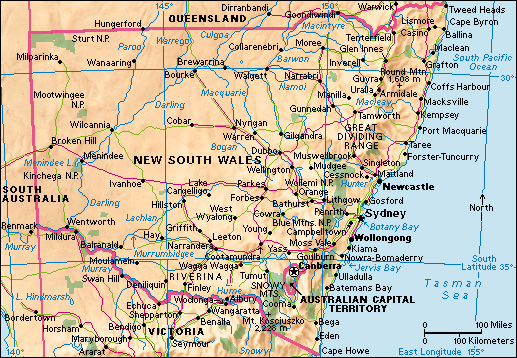Orange (pop. 40,127) is a city in eastern New South Wales, Australia. It is in an agricultural area known for tree fruits, especially apples and cherries. The Orange region is also known for its vineyards and wineries. Additionally, the education, health care, manufacturing, and mining industries employ many residents of Orange.

Mount Canobolas, an extinct volcano, lies about 7 miles (11 kilometers) southwest of Orange. It is a significant Aboriginal cultural site. Mount Canobolas supports many native plants and animals, including the agile antechinus—a kind of marsupial mouse—and the silver-leaf candlebark tree. Other natural attractions in and near Orange include Blackmans Swamp Creek and Lake Canobolas.
The city hosts a festival and has numerous memorials in honor of the Australian poet Banjo Paterson (1864-1901), who was born near Orange. In addition, Orange was the birthplace of the Australian poet Kenneth Slessor (1901-1971). 
The Wiradjuri people, one of the largest Aboriginal groups in New South Wales, are the traditional inhabitants of the Orange region. In 1823, during Australia’s colonial period, the explorers Percy Simpson and James Blackman—immigrants of European descent—passed through the area. Early colonial surveyors called the Orange region Blackman’s Swamp. Thomas Mitchell, the surveyor-general of New South Wales, renamed the settlement there in honor of Prince William of Orange, who became King William II of the Netherlands.
Orange’s early industries included flour milling and wheat farming. In 1851, gold was discovered in Lewis Ponds Creek at nearby Ophir. This discovery led to the first in a series of Australian gold rushes. Orange was organized as a municipality in 1860. The Main Western Railway line reached Orange in 1877. Orange became a city in 1946.
